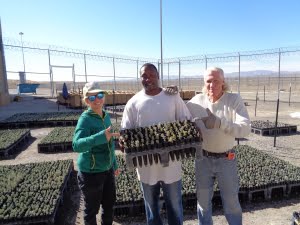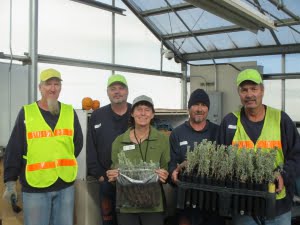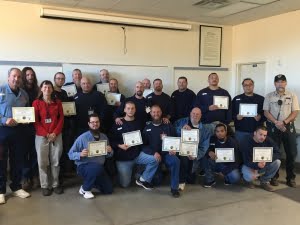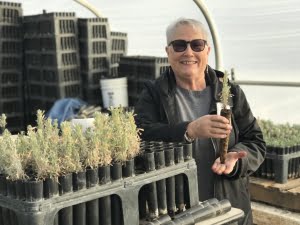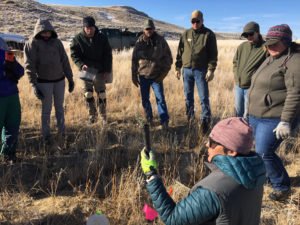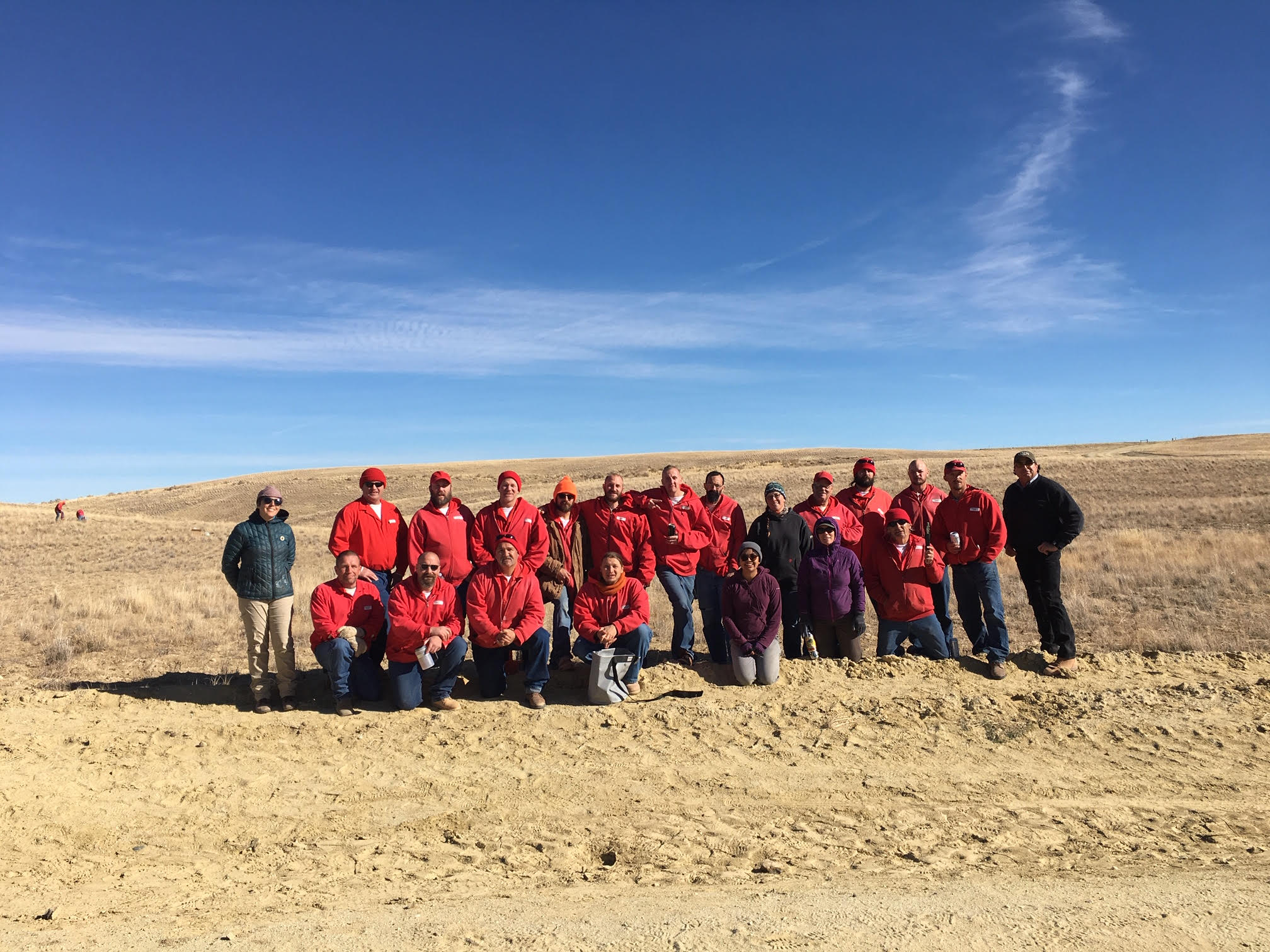
Rebuilding Habitat and Empowering Hope
By Stacy Moore
November 2019
Carefully putting ten sagebrush seedlings into a plastic bag, inmate Jessie Downing places his bundle of plants into a box with 110 other plugs to be picked up by the Winnemucca Bureau of Land Management (BLM) field office in Nevada for planting on land scorched by wildfire. “The Sagebrush in Prisons project has taught me everything I could possibly know about sagebrush and how important they are to the land ravaged by wildfires. Doing something good for the local ecosystem has made me feel better about myself just giving back to the environment. I was even able to share plant growing tips with my mom, bringing us even closer,” commented inmate Downing who worked on the project this season.
Thanks to funding by BLM in Washington D.C and leadership by Institute for Applied Ecology’s Ecological Education staff and contractors, 421,241 plants were grown this season. The project is in nine prisons, engaging inmates at Warner Creek Correctional Facility and Snake River Correctional Facility in Oregon; South Boise Womens Correctional Center (CC) and Idaho State CC in Idaho; Lovelock CC, Warm Springs CC, and Northern Nevada CC in Nevada; Federal Correctional Institution Herlong in CA; and Wyoming Honor Farm in Wyoming.
The sagebrush plugs are especially important for the greater sage-grouse, an iconic bird of the sagebrush steppe, which has declined across much of its historic habitat. The great basin has lost approximately half its former sagebrush ecosystem in recent decades due to invasive weeds and fires. Transplanting seedlings with a developed root system helps reestablish native plants back into the ecosystem.
IAE staff and contractors visit each prison weekly starting in April when inmate crews mix together peat moss, vermiculite and perlite followed by carefully filling conetainers (small cone-shaped pots) with the soil mixture and sagebrush seeds. Throughout the summer inmates water, thin, and fertilize the seedlings. Come fall, adults in custody box up the plants for delivery. In some instances, eligible inmates leave their prison facility during the day to out-plant the seedlings in their new habitat. “This program is great because not only do we produce locally adapted sagebrush plugs for restoration, but there is also an educational component where we teach them WHY we are growing all this sagebrush. It is also gives the inmates a chance to be a part of something positive and give back to our local communities and for some of them it truly changes their lives, says Nevada contractor Shannon Swim who has worked with the program for 3 years. "It is the most rewarding work I have ever done!”
Not only are local natural areas profiting from the native plant plugs, but the inmates benefit as well. Through botanical curriculum and hands-on training in horticulture techniques, inmates gain skills in problem solving, team building, data collection and ecological restoration. Inmates also receive sustainability lectures from educators who come to the facility each month to discuss topics such as green energy, beekeeping, mammals of the sagebrush steppe and other aspects of science or ecology. Idaho Contractor Nancy DeWitt works with 3 prisons and commented, "Working with inmates to grow native plants for habitat restoration has been an amazing experience. Watching such diverse--and often quite broken--individuals coalesce as a team and blossom alongside their seedlings is very moving. The inmates learn new skills, overcome challenges, practice patience and respect, and share a huge sense of accomplishment by growing so many first-rate plants. I have also enjoyed bringing educational programs into the prisons that help foster a sense of environmental stewardship among this under-served population." An officer in Nevada working with the program added, “I truly believe it improved the quality of life for the inmates involved. I’m betting somewhere down the line of events in these guy’s lives they will make a positive decision that they would have otherwise not considered had they not been part of your program.” Wyoming contractor Tina Russell said, "We had a truly excellent crew of inmates who worked very well together. They worked collaboratively to solve problems, recruited other interested inmates to help, and were very diligent about doing their jobs and doing them correctly!"
For inmates serving time, the “Sagebrush in Prison Project” provides a needed opportunity to work outside and nurture living things. For many it is the first time they have had much contact with nature. A Nevada inmate eloquently stated, “On a personal level, working on the Sagebrush in Prisons Project has given me back my connection to nature as well as helping with my PTSD and anxiety. I feel humbled, a great sense of pride to know that although I’m incarcerated I’m contributing to a greater cause." A South Boise Womans CC inmate helped plant out the seedlings she cared for all summer said, “My participation in the Sagebrush in Prisons Project has been empowering. The project offered me hope when I had none, solace and solitude in an otherwise chaotic, depressing and often, oppressive living situation. I found the project site to be a sanctuary—a place to find peace of mind and foster my sense of purpose while contributing to the rebuilding of habitat for our wildlife."
Restoration
Research
Education
Contact
Main Office:
4950 SW Hout Street
Corvallis, OR 97333-9598
541-753-3099
info@appliedeco.org
Southwest Office:
1202 Parkway Dr. Suite B
Santa Fe, NM 87507
(505) 490-4910
swprogram@appliedeco.org
© 2025 Institute for Applied Ecology | Privacy Policy

